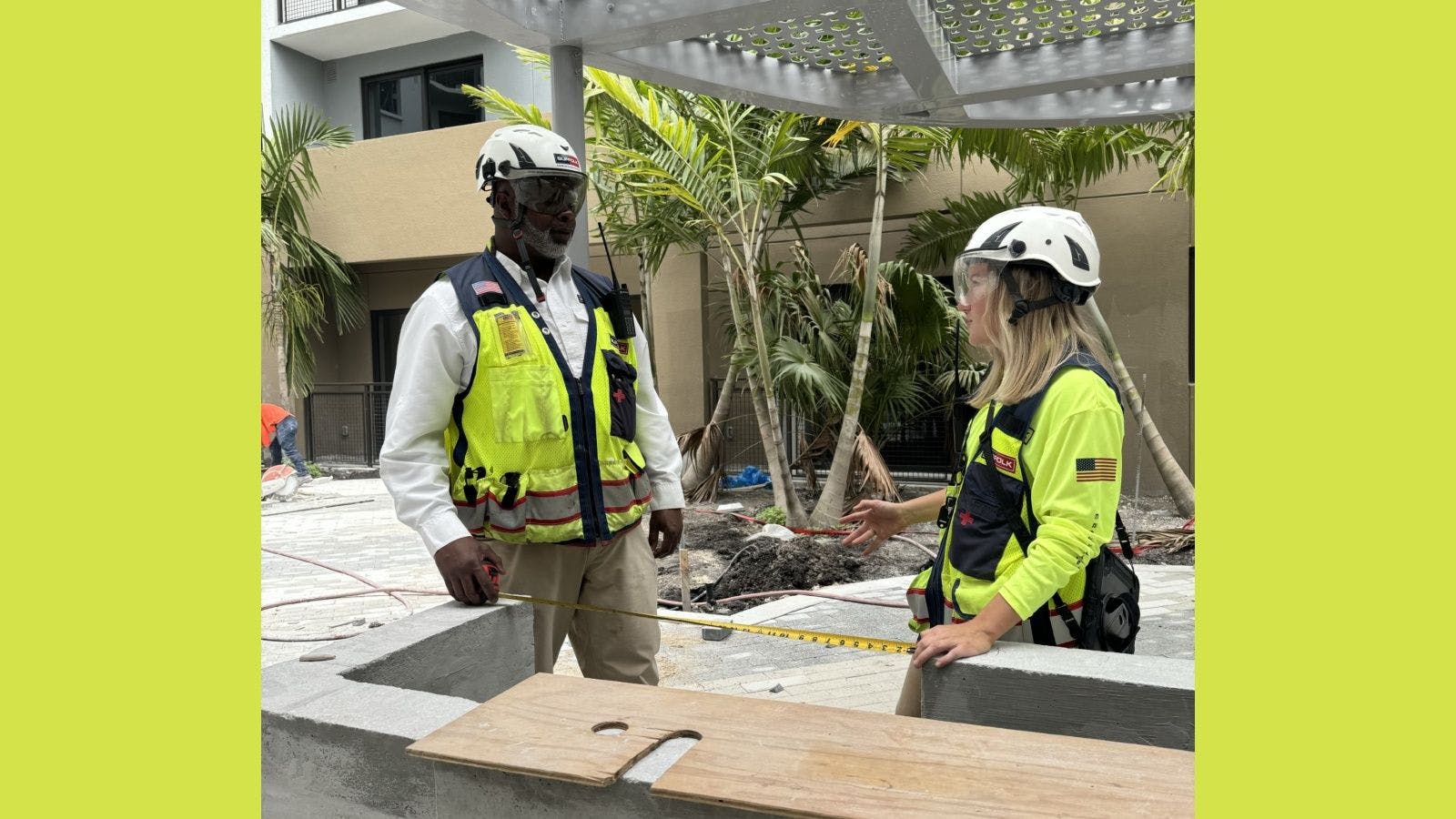
Community Colleges Offer Opportunity to Get a Degree and Find a Career in Construction
The building construction and service industry is ripe for disruption and further digital innovation. As the field evolves, it’s becoming increasingly complex, requiring workers to have advanced skills and knowledge of modern equipment and technology, such as digital building automation systems or robotic solutions.
The sector is also dedicating more and more attention to sustainability and how to design, construct and maintain buildings that consume less energy, emit less carbon and meet sustainability regulations, all while trying to balance costs and other pressures.
For this reason, today’s construction workers and service technicians need to have a firm grasp on the role of digital technology in greener buildings and how to leverage data to drive decisions and measure progress throughout a building’s lifecycle. Therefore, the educational programs used to train skilled trades workers must keep up with changing industry needs and trends. As these roles transform to require more digital capabilities, companies need to continue to look for new ways to bring in future talent to fill these roles. To do so, you need to cast a wider net for future talent in looking at all areas of society that may not have previously been exposed to the building trades.
For instance, people in underserved communities often face barriers to entering trade careers in the first place and gaining the skills they need to succeed. Some of the obstacles individuals may face include financial challenges to get an education, lack of exposure to different career paths and living in communities that don’t have learning programs in place to support their interests.
This inequitable access to trade education is problematic amid an already dwindling skilled trade workforce. In the construction industry, open roles are skyrocketing as the number of laborers available to fill these jobs is plummeting. Construction leaders are left scrambling to hire qualified workers and complete overdue projects while being unable to take on new work and grow their business. Not only does this extend the timeline of in-progress projects, but it also slows overall innovation in the sector and negatively impacts the many organizations that rely on building leaders to get things done.
On the bright side, this talent crunch presents a real opportunity for businesses, schools and communities to come together to inspire the next generation of trades talent through accessible training, mentoring and education.
PEOPLE AND BUSINESSES
One beneficial yet often underutilized type of partnership to proactively grow the workforce across multiple industries is between businesses and community and/or technical colleges with disciplines connected to their missions. For instance, the Johnson Controls Community College Partnership Program is fostering the next wave of leaders who will—quite literally—build our sustainable future. The program, in its third year, is on track to donating $15 million by the end of 2026 through renewable grants and equipment donations to expand access to educational programs and launch students’ successful careers in smart, healthy and sustainable buildings.
Lone Star College in Texas, a recipient of one of these grants, is utilizing the funds to provide scholarships and purchase classroom teaching equipment to help students in historically underrepresented populations gain exposure to trades like HVAC, fire and security and embark on exciting, high-impact careers.
The impact philanthropic partnerships can have on individuals and the industry at large is boundless. Through investments, colleges can make necessary program upgrades and introduce students to new career pathways. Students, especially those in underserved communities, can foster connections and develop cutting edge skills that will transfer to real-world jobs they may not have known about or had access to otherwise. Skilled trades workers are in high demand these days, so students that attend these programs are very likely to secure jobs that will help them support themselves and their families.
But you may be wondering, what’s in it for the businesses who offer funding and resources? It turns out, quite a lot. To solve problems of the future and provide next-gen solutions and services, businesses need to recruit and retain skilled talent. Instead of passively letting talent pools run dry, businesses need to take the lead in workforce development initiatives to build resilient talent pipelines for the future. While this responsibility does not fall solely on businesses, they have plenty to gain from investing in education through funding and time spent on mentorship programs.
COMMUNITIES AND THE PLANET
At a macro level, workforce development initiatives can make a positive impact on communities and the environment. In many ways, communities are like plants that need to be watered to grow; the more that is invested in resources like education and job training, the healthier communities will be overall. When community colleges offer pathways to burgeoning trade careers, it’s more likely that graduates will stay local, reinvest and give back to the community where they received training and job support. Zooming out even further, the federal economy booms when growing industry demands are met with skilled talent to close the labor gaps.
Many trade professions today—building construction and maintenance included—are also prioritizing sustainability and setting ambitious goals to reduce the environmental footprint of humans. For example, Salt Lake City College is dedicating the funds from its grant from Johnson Controls to educate students on the role of building automation systems in water conservation, both inside and outside of buildings. Saving water is a matter of extreme concern to locals due to the environmental crisis that could occur if the nearby Great Salt Lake was to dry up in the future. While trades careers have always been rewarding, those entering the industry today have an even greater opportunity to leave a lasting impact on the planet and mitigate the effects of climate change and carbonization.
The bottom line is that fulfilling careers in the trades are for everyone, but not everyone is aware of the available opportunities or has access to training programs that lead to these careers. As part of generational culture shifts, many young workers are also advocating for clearer growth paths, better training and more socially and environmentally conscious organizations to work for. Businesses, schools and communities need to rise to the challenge by taking proactive measures to build the skilled talent pools they want to hire from in the future.
Related stories








